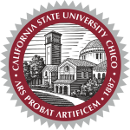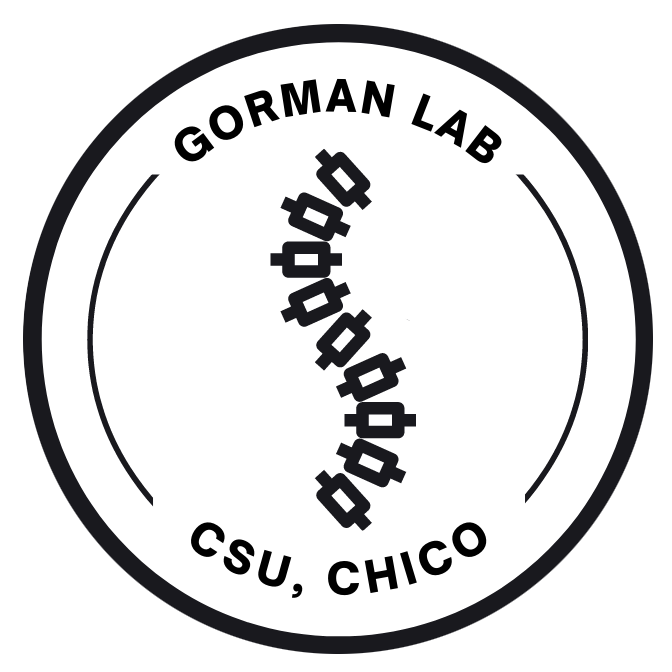Research
Keywords: scoliosis, spinal curvature, genetic, genomic, cellular, physiology, biomechanics, posture, fish
Idiopathic scoliosis (IS) is the most common form of human abnormal spinal curvature, affecting up to 10% of the global pediatric population (depending on severity). The syndrome is characterized by a three-dimensional abnormal curvature that begins during pediatric growth. The curve is not caused by apparent congenital defects or dysptrophy. The cause of IS has remained unknown since Hippocrates first described the syndrome thousands of years ago. Although most cases are sporadic, a genetic basis is accepted (Gorman et al., 2012). An idiopathic-type of curve is one that has a genetic basis but unknown biological cause. Furthermore, for unknown reasons, adolescent females are up to 7 times more likely to require spinal surgery (Miller, 2001: Adolescent idiopathic scoliosis: etiology. In: The Pediatric Spine, Stewart Weinstein ed, Lippincott Williams & Wilkins, Philadelphia PA). Other factors that influence a highly variable prognosis are unknown.
The Gorman lab uses the guppy fish and medaka fish as complementary models to understand: 1) the genetic and cellular causes of idiopathic-type curvature, 2) why some curves progress to severity. Prior work has established that fish are a suitable model animal for the study of idiopathic scoliosis (Gorman et al., 2007; Gorman and Breden, 2007; Gorman, et al., 2010; Gorman and Breden 2010; Gorman et al., 2012).
Our approach is to integrate genetic discoveries with an understanding of cellular functions. Importantly, idiopathic-type curvature is a phenotype that is dependent on mechanics (Gorman and Breden 2009; Gorman, et al, 2010; Oliazadeh, et al, 2017). We seek to understand how genes and cellular defects manifest on a physiological level, in the context of biomechanics. Outcomes will provide insights to develop prognostic and therapeutic tools in orthopedics, elucidate the biological pathways that maintain postural stability, and the genetic basis of cellular biomechanics.
Publications
Niaz Oliazadeh, Kristen Gorman, Mohamed Elbakry, Alain Moreau (2022) Altered Mechanotransduction in Adolescent Idiopathic Scoliosis Osteoblasts: A Functional In Virto Study. Sci. Rep. Feb 3; 12(1): 1846.
Marie-Yvonne Akoume, Mohamed Elbakry, Maxime Veillette, Anita Franco, Dina Nada, Hubert Labelle, Jean-Marc Mac-Thiong, Guy Grimard, Jean Ouellet, Stefan Parent, Charles-Hilaire Rivard, Giovanni Lombardi, Alessandra Colombini, Giuseppe Banfi, Marco Brayda-Bruno, Kristen Gorman, Alain Moreau (2019) A Differential Hypofunctionality of Gαi Proteins Occurs in Adolescent Idiopathic Scoliosis and Correlates with the Risk of Disease Progression. Sci Rep. Jul 11;9(1):10074. doi: 10.1038/s41598-019-46325-2.
Dina Nada, Cédric Julien, Pierre Rompré, Marie-Yvonne Akoume, Kristen Gorman, Mark Samuels, Emile Levy, Jason Kost, Dawei Li, Alain Moreau (2019) Association of Circulating YKL-40 Levels and CHI3L1 Gene Variants with the Risk of Spinal Deformity Progression in Adolescent Idiopathic Scoliosis. Sci Rep. Apr 5;9(1):5712. doi: 10.1038/s41598-019-41191-4.
A Moreau, M Taheri, M Pellicelli, C Picard, J-F Lavoie, P Lavigne, KF Gorman, A Franco (2017) Role of SUMOylation in primary osteoarthritis pathogenesis. Osteoarthritis and Cartilage, April 1: S19-S20.
Niaz Oliazadeh, Kristen Fay Gorman, Robert Eveleigh, Guillaume Bourque, Alain Moreau (2017) Identification of elongated primary cilia with impaired biomechanosensation in Idiopathic Scoliosis patients. Scientific Reports, Mar 14; 7:44260.
Charles C. Carey@, Kristen F. Gorman@, Becky Howsmon@, Aaron K. Aragaki, Charles Kooperberg, Suzannah Rutherford @These authors made equally substantial contributions to this work (2017) Threshold trait architecture of Hsp90-buffered variation. (BIORXIV/2015/016980) In revision.
Qi Lin Tang, Cedric Julien, Robert Eveleigh, Guillaume Bourque, Anita Franco, Kristen F. Gorman, and Alain Moreau (2015) A Replication Study for Association of 53 Single Nucleotide Polymorphisms in ScoliScoreTM Test with Adolescent Idiopathic Scoliosis in French-Canadian Population. Spine, Feb 2 (Epub).
Gorman, Kristen F; Julien, Cedric; Oliazadeh, Niaz; Tang, Qilin; and Moreau, Alain (2014) Genetics of Idiopathic Scoliosis. In: eLS. John Wiley & Sons, Ltd: Chichester. DOI: 10.1002/9780470015902.a0025313.
Debbie Ehrmann Feldman, Marie Beauséjour, José Félix, Sosa, Lise Goulet, Stefan Parent, Hubert Labelle, and the Members of the Quebec Scoliosis Society and the Canadian Pediatric Spinal Deformities Study Group. (2014) Cost effectiveness of school screening for scoliosis: A systematic review, Int J Child Adolesc Health, 7(1):00-00.
Douglas Londono, Ikuyo Kou, Todd A Johnson, Swarkar Sharma, Yoji Ogura, Tatsuhiko Tsunoda, Atsushi Takahashi, Morio Matsumoto, John A. Herring, Tsz-Ping Lam, Xingyan Wang, Elisa MS Tam, You-Qiang Song, Yan-Hui Fan, Danny Chan, Kathryn SE Cheah, Xusheng Qiu, Hua Jiang, Dongsheng Huang, Japanese Scoliosis Clinical Research Group, TSRHC IS Clinical Group, the International Consortium for Scoliosis Genetics, Peiqiang Su, Pak Sham, Kenneth MC Cheung, Keith DK Luk, Derek Gordon, Yong Qiu, Jack Cheng, Nelson Tang, Shiro Ikegawa, Carol A. Wise (2014) A meta-analysis identifies adolescent idiopathic scoliosis association with LBX1 locus in multiple ethnic groups. J Med Genetics, Apr 10. doi: 10.1136/jmedgenet-2013-102067.
Marie Beauséjour, Lise Goulet, Stefan Parent, Debbie Ehrmann Feldman, Isabelle Turgeon, Marjolaine Roy-Beaudry, Jose Felix Sosa, Hubert Labelle, and Members of the Quebec Scoliosis Society and of the Canadian Paediatric Spinal Deformities Study Group. (2013) The effectiveness of scoliosis screening programs: methods for systematic review and expert panel recommendations formulation, Scoliosis, 8:12.
C Julien, KF Gorman, M-Y Akoume, A Moreau. (2013) Towards a comprehensive diagnostic assay for scoliosis. Personalized Medicine 10 (1): 97-103.
Gorman KF, Julien C, Moreau A. (2012) The genetic epidemiology of idiopathic scoliosis. European Spine Journal. 21(10): 1905-1919.
KF Gorman, Kristina Pohl, Farhana Ali, Karan Bandwait, Felix Breden (2012) Model teleosts for the study of idiopathic-type spinal curvatures: potential biomedical applications (miniReview). Journal of Applied Ichthyology, 28: 353-359.
KF Gorman, Julian K. Christians, Jennifer Parent, Roozbeh Ahmadi, Detlef Weigel, Christine Dreyer, Felix Breden (2011) A major QTL controls susceptibility to spinal curvature in the curveback guppy. BMC Genetics, 12:16.
KF Gorman, GR Handrigan, E Jin, R Wallis, F Breden (2010) Structural and micro-anatomical changes in vertebrae associated with idiopathic-type spinal curvature in the guppy. Scoliosis, 2010 Jun 7; 5:10.
KF Gorman and F Breden (2010) Disproportionate body lengths correlate with idiopathic-type curvature in the curveback guppy. Spine, 35(5), 511-516.
KF Gorman and F Breden (2009) Idiopathic-type scoliosis is not exclusive to bipedalism. Med Hyp, 72(3), 348-352.
KF Gorman, S. Tredwell, and F. Breden (2007) The mutant guppy syndrome curveback as a model for heritable spinal curvature in humans. Spine: 32(7), 735-741.
KF Gorman and F. Breden (2007) Teleosts as models for human vertebral stability and deformity. Comparative Biochemistry and Physiology Part C: 145(1), 28-38.
Carey CC, Gorman KF, Rutherford S (2006) Modularity and Intrinsic Evolvability of Hsp90-Buffered Change. PLoS ONE: 1(1): e76. doi:10.1371/journal.pone.0000076.

